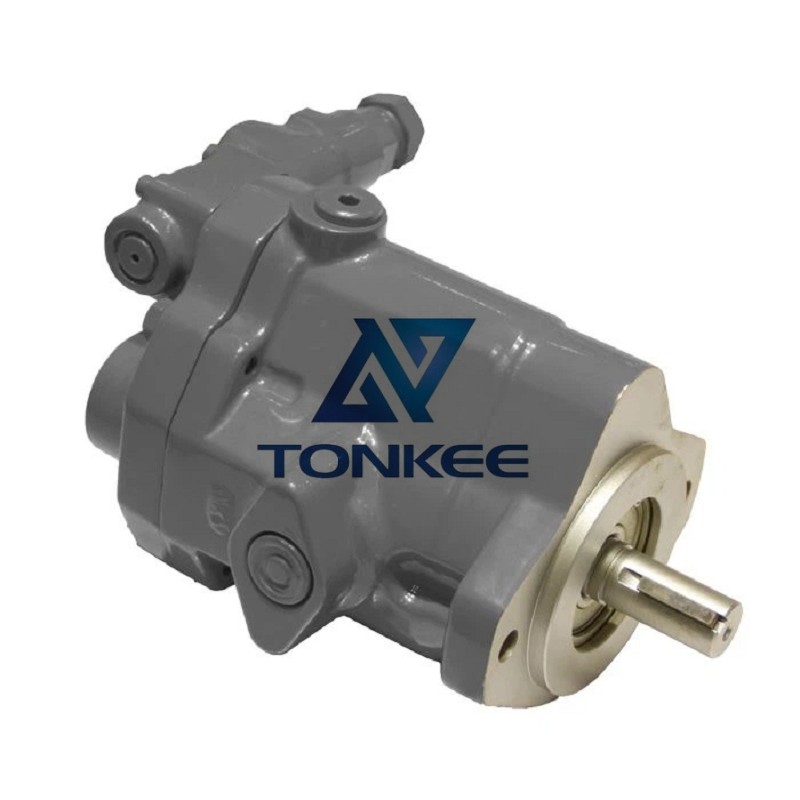
Pump Housing: The pump housing is the main body of the PVQ10 hydraulic pump, providing structural integrity and housing for internal components.
It is typically made of high-quality cast iron or aluminum alloy, ensuring durability and resistance to wear and tear.
Piston Assembly: The piston assembly consists of a piston, cylinder block, and piston rings. These components are responsible for converting mechanical energy into hydraulic energy. They must be precisely machined to ensure smooth operation and a tight seal, minimizing leakage.
Valve Plate: The valve plate is a crucial part of the PVQ10 hydraulic pump, responsible for controlling the flow of hydraulic fluid. It contains various valve ports and passages that direct the fluid to different areas within the pump. The valve plate should be made from high-strength materials, such as hardened steel, to withstand high pressures and prevent leakage.
Swash Plate: The swash plate is a slanted disc connected to the pump shaft. It is responsible for converting the rotary motion of the pump into reciprocating motion, driving the pistons. The swash plate angle determines the displacement of the pump, affecting the flow rate and pressure. It is typically made of hardened steel or bronze alloy for strength and durability.
Bearings: The PVQ10 hydraulic pump utilizes several bearings to support rotating components and reduce friction. These include radial bearings for the pump shaft and thrust bearings to handle axial loads. High-quality bearings with proper lubrication are crucial to ensure smooth operation and extend the pump's lifespan.
Shaft Seal: The shaft seal prevents hydraulic fluid from leaking along the pump shaft. It is usually a combination of lip seals, O-rings, and gaskets. The seals must be made from materials that are compatible with the hydraulic fluid and capable of withstanding high pressures and temperatures.
Shaft Coupling: The shaft coupling connects the pump shaft to the prime mover, such as an electric motor or an engine. It must provide a secure and reliable connection while allowing for easy installation and removal during maintenance.
Control Mechanism: The control mechanism, such as a pressure compensator or a load-sensing system, regulates the output flow and pressure of the hydraulic pump. It ensures that the pump delivers the required hydraulic power while conserving energy and preventing system overload.
Mounting Flange: The mounting flange provides a secure attachment point for the hydraulic pump to the mounting surface.
It should be sturdy and properly machined to ensure proper alignment and minimize vibration.
Sealing and Gaskets: Various sealing components, including O-rings, gaskets, and seals, are used throughout the PVQ10 hydraulic pump. These components ensure that all connections and interfaces are properly sealed, preventing leaks and maintaining system efficiency.




